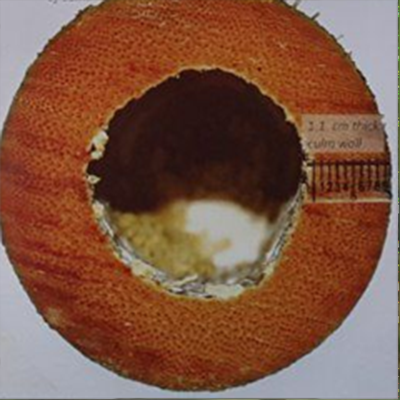03. Dendrocalamus strictus (Roxb.) Nees
Local names
English: Male Bamboo,
Solid Bamboo or Calcutta Bamboo,
General description
Dendrocalamus strictus is a medium-sized bamboo with culms of about 8-20 m tall and 2.5-8 cm in diameter. The internodes are 30-45 cm long and thick-walled. Culms are hollow when growing under humid conditions, but nearly solid under dry conditions. This species has pale blue - green culms when young, and dull green or yellow culms on maturity, which can slightly zig-zag from the middle towards the top. Its nodes are somewhat swollen and basal nodes are often rooting. Gregarious flowering cycle varies from 25-45 years.
Habit and Habitat
Medium sized bamboo. This species is mainly found in semi dry and dry deciduous forests, or as understory in mixed forests and teak plantations. It grows on hill slopes, ravines and alluvial plains from sea level up to 1,200 m. Dendrocalamus strictus prefers a low relative humidity and mean annual temperatures between 20°C - 30°C, but can withstand extreme temperatures.
Distribution
Native to Nepal, Bangladesh, Myanmar and Thailand. Many other countries in Southeast Asia such as China, Sri Lanka, Malaysia, Indonesia, Philippines and Vietnam have introduced and cultivate the species.
Uses
Dendrocalamus strictus is extensively used as raw material in paper mills and also for a variety of purposes such as light construction, furniture, musical instruments, bamboo board, mats, sticks, agricultural implements, rafts, baskets, woven wares and household utensils. Young shoots are edible and used as food. Leaves are used as forage, and decoction of leaves and nodes and silicious matter is used in traditional medicine.




